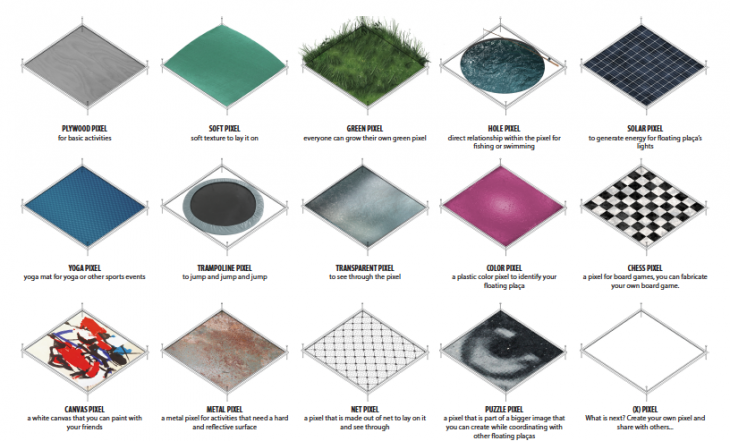For Booklet :
We were discussing in the beginning, about the major urban ‘problem’ of Barcelona. The city is well designed with public spaces at human scale, and street life in Barcelona is quite enjoyable thanks to climate. But what was missing for us was activities around and related to Mediterranean sea, after we moved to Barcelona, it took almost 2 months to convince our local friends to go to seaside and enjoy the sea because they were so prejudiced about tourist density of the coastline. Therefore, we discussed about designing public spaces ‘on’ the sea. A floating Plaça! However, after developing the project, we recognized that the project could also be implemented on public squares in the city, so the floating plaças are pop up public spaces both on sea and in public squares now.
With the project we are providing both physical and digital network for urban life, the project has its own application and website, which is also connected to main social media platforms like ‘Facebook’ and ‘Instagram’. There, we are planning to launch the project and spread the word. Since the project itself is actually a local self-fabrication project, the idea can be spread around all the places with local fabrication ateliers or Fablabs. There are main subjects that we will mention below we think would be easier to follow in order to understand the process: application of project, use and content of application, methods of fabrication, places that the project can be implemented, recycle and reuse of fabricated platforms, and open source data collection through the sensors on these platforms spread all the cities around the world.
First, we believe that social network will have a major role on the process of developing the project because people will write down their ideas, share them, create their own public or private open-air events, and will fabricate their platforms by the help of the online application. These platforms are fabricated by people, but there is a catalogue of design of existing or previously fabricated platforms, since the ones which are on the sea need to have a base structure to be able to swim, this is an obligatory production, but the main part of platforms which we call as ‘pixels’ are open to design and modify.
As we mentioned before project can be implemented both on sea and in public squares in the cities. We believe in that the project will spread around the cities with Fablabs and will have a major impact on the use of public spaces in big cities. We should also mention that the platforms are recyclable and after some use and getting old, they can be brought back to Fablabs to be reused for the production of other platforms!
The project has a data collection use as well, since they will be a part of urban life now, they are easily used for collecting raw environmental and social data! Such as, water quality, air quality, social interactions, density of specific events to see the interest of citizens etc.

Floating Plaça is a project of IaaC, Institute for Advanced Architecture of Catalonia developed at Master in City and Technology in 2015 by:
Students: Ça?lar Gökbulut, Ilkim Er, Seda Tu?utlu
Faculty: Marcella del Signore